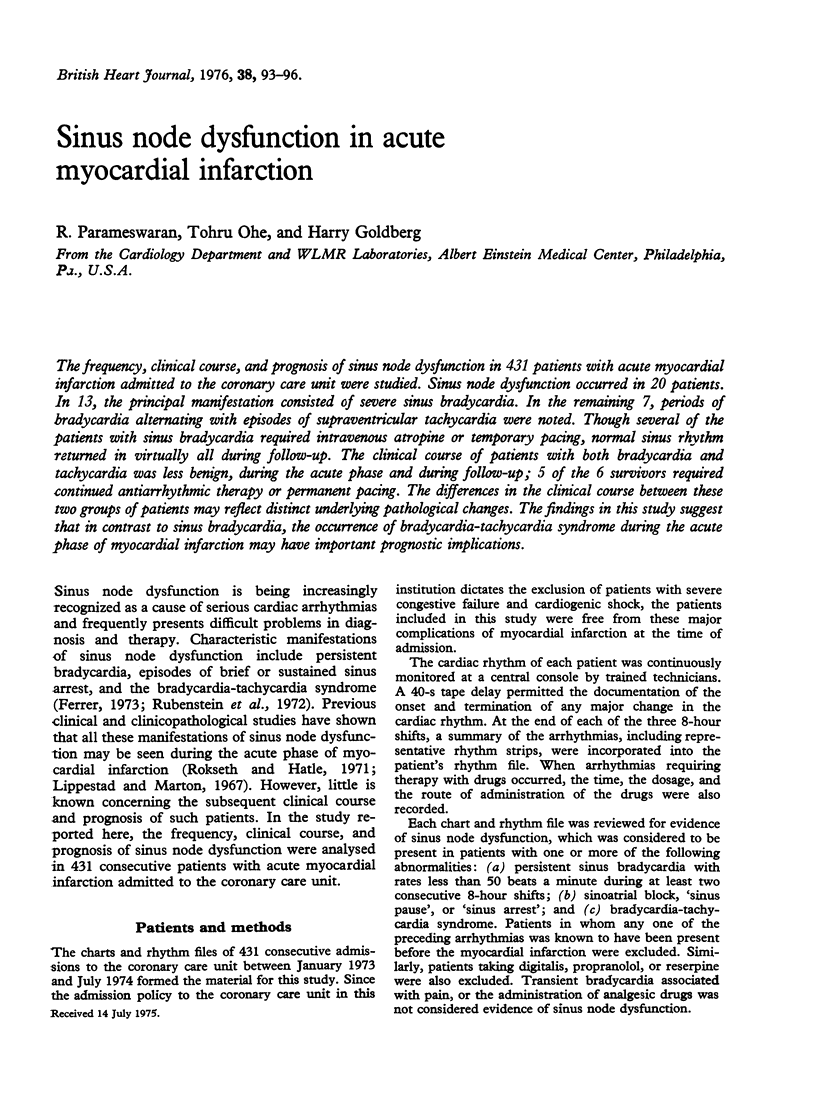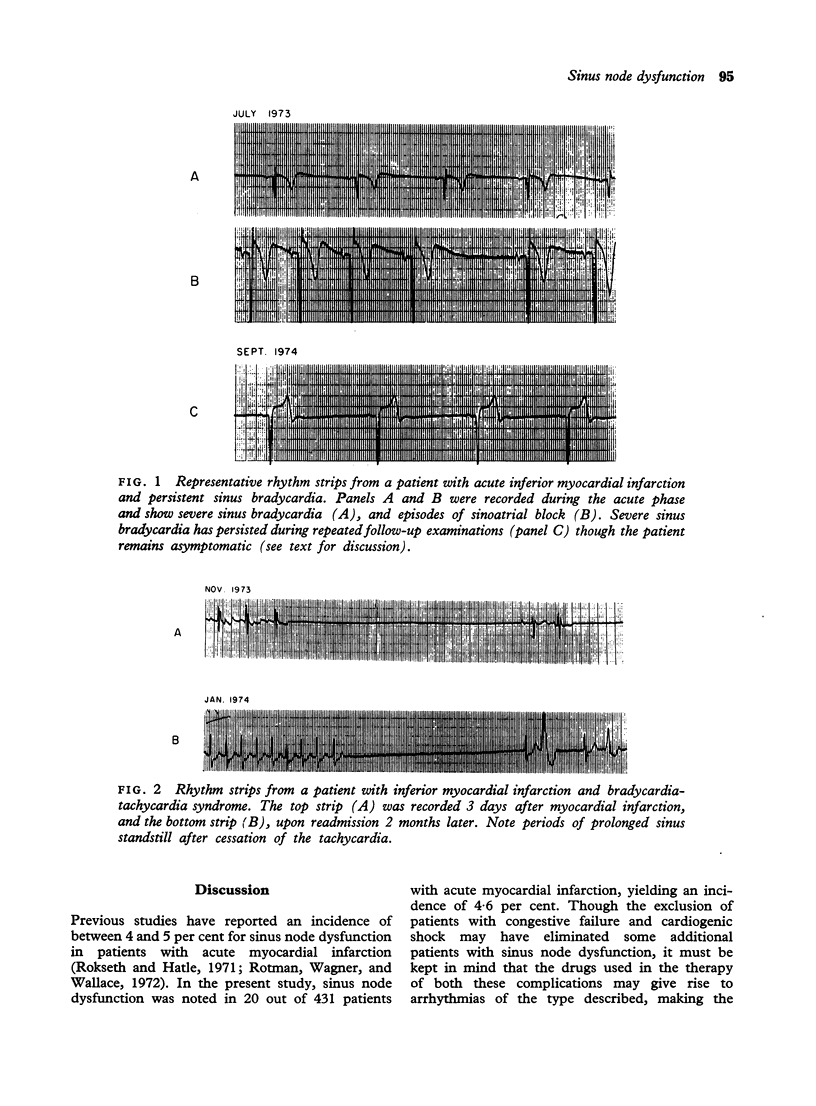Abstract
The frequency, clinical course, and prognosis of sinus node dysfunction in 431 patients with acute myocardial infarction admitted to the coronary care unit were studied. Sinus node dysfunction occurred in 20 patients. In 13, the principal manifestation consisted of severe sinus bradycardia. In the remaining 7, periods of bradycardia alternating with episodes of supraventricular tachycardia were noted. Though several of the patients with sinus bradycardia required intravenous atropine or temporary pacing, normal sinus rhythm returned in virtually all during follow-up. The clinical course of patients with both bradycardia and tachycardia was less benign, during the acute phase and during follow-up; 5 of the 6 survivors required continued antiarrhythmic therapy or permanent pacing. The differences in the clinical course between these two groups of patients may reflect distinct underlying pathological changes. The findings in this study suggest that in contrast to sinus bradycardia, the occurrence of bradycardia-tachycardia syndrome during the acute phase of myocardial infarction may have important prognostic implications.
Full text
PDF





